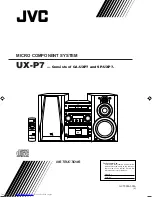
Basic Protocol
With basic protocol, messages sent to and from the MPRX and the host are transmitted without error
checking. For each host transmission, the MPRX returns a
#Done
or
#Error
message to the host.
When the host device is physically close to the MPRX and no sources of interference exist, the basic
protocol provides reliable communications.
The host must be ready to receive reader-transmitted messages because in basic protocol the MPRX
does not wait for the host to acknowledge a message before transmitting the next message. If necessary,
the host may halt reader transmissions by using software flow control. Refer to
for software flow control information.
Error Correcting Protocol
When the quality of data communications is imperative or may be suspect, you can utilize ECP to ensure
the integrity of data transmitted between the MPRX and the host.
Note:
TransCore recommends that basic protocol (not ECP) be used when commands are entered
manually at the keyboard.
Error correction is accomplished with the use of a cyclic redundancy check (CRC) value that is based on
the message data. The originator (reader or host) calculates the CRC value of a message and includes it in
the transmitted message.
The recipient (reader or host) also calculates a CRC value for the received message. If the transmitted
message data is correct, the CRC value calculated by the recipient will agree with the CRC value
calculated by the originator. If the CRC values do not agree, the recipient rejects the message.
Message sequence numbers are also included when using ECP. These sequence numbers are checked
to determine if the message received has the correct sequence number; if not, the recipient rejects the
message.
Because the seven-bit ASCII code is used and there are eight data bits per character, the eighth bit can
optionally be used to support parity. Where parity is selected, the CRC value calculation includes the parity
of each character in the calculation of the CRC value.
Parity is required to achieve the most reliable communications. If parity is enabled, both the MPRX and the
host must issue a message if any received character has a parity error. However, the message must not be
transmitted before receipt of the <
eom>
character. If the message is transmitted prematurely, the MPRX will
issue an
#Error
message, and the host device will issue a negative acknowledgment message.
Chapter 4 Communications Protocols
TransCore Proprietary
4–43
Содержание MPRX 10-7200-001
Страница 137: ......
















































